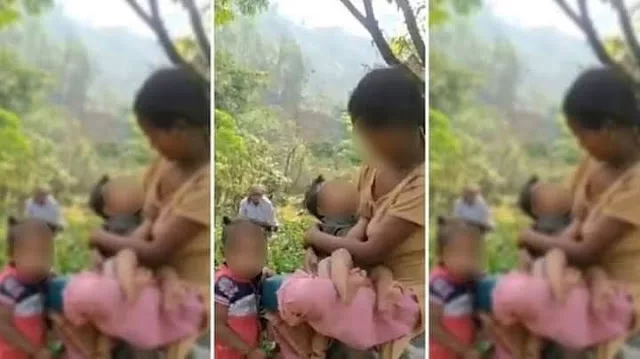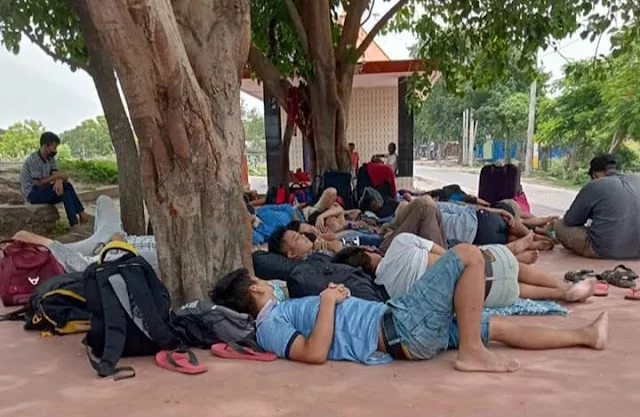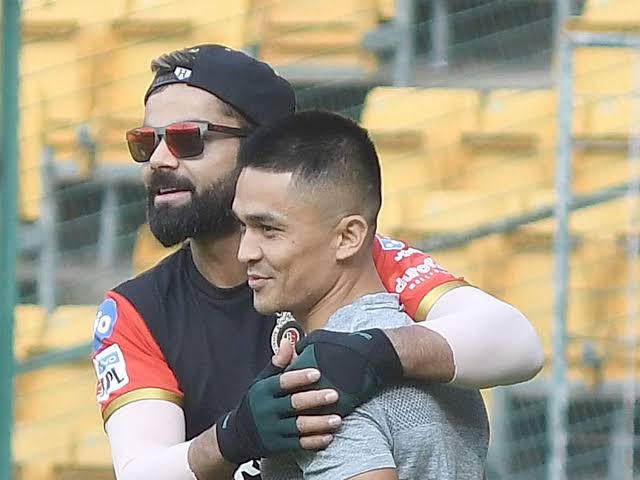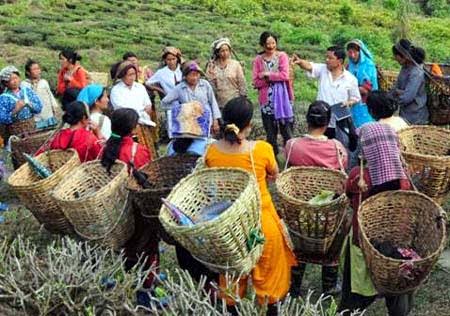 |
| Kul Puja of Khambu Rai Kirats |
No other than Rais are permitted to enter into the room where Shamkhaling is installed. One who indulges in unholy and offensive activities in this place of Kul Puja, is sure to get Dewa or the curse, for the redemption of which he should employ the services of a beejuwaha to beg for forgiveness for his mistakes. These beejuwahas (witch doctors) are also the right persons through whom the ancestors and other deities are worshipped and paid homage to. They enchant a typical mantra known as Mundum in performing all religious rites and rituals. A new bride is not taken inside the house without making a kukut sacrifice at the threshold of the house. Thereafter she is taken straight to Sharnkhalung where she is accepted as a new member of the family invoking Chhekulung for approval and blessing the bride. This custom is known as Langthim Bhuma. Similarly, when their daughters get married, they bless the couple, pronouncing the names of the spouse while beating a bronze bowl with a stick again in the Shakhalung, to uprise the kul of the marriage of their daughter and to bless her for her new life. This is also to handover the entire responsibility of their daughter to their son-in-law. It is called Chan-Chin and is carried out through mundum which they call Bulukchung Sangma.
The three stones placed in Sharnkhalung are also considered to be the symbol of Brahma, Bishnu and Rudra and are believed to be the representation of three spheres, Lung-heaven, Taralung-earth and Hawalung the hell.
The Rais who believe in rebirth, consider themselves to be the descendant or Paruhang of the king of Himalayas-Shiva and of Shumnima the mother of parvat-Parvati.
There are abound ant references, in support of this claim of Rais, in Puranas, Mahabharat and other Sanskrit literatures where Lord Shiva has been referred to as Kiratayshwar Mahadeo.
According to their custom the purohit called beejuwa, solomnise both the arranged and eloped marriages. In consummating these marriages the beejuwa worship Kul and make fire in the Shamkhalung to bear witness of the ceremony enchanting mundum. Enchantment of mundum is so important that even in the event of death mundum is used in transporting the departed soul either to Suptulung-heaven or to Hawalung, the hell.
This sin fearing tribe uses Ganga Jal or the pure water of the Himalayas, stones brought from the mountain and two types of vegetations in matters of repentance for their sins.
Among other custom of Rais, Boilungma is of prime importance. Boilungma in Nepali is known as Ghar Paicho. On the day when a Rai shifts to a newly built house he takes locally prepared liquor called washim in a container made from dried gourd, which they call chindo and sprinkle the same all over the house with a small portion of banana leaf and declare that there remains no wood or stone in the house they may cause trouble and inconvenience to the family members.
They perform Kul Puja twice. annually, called Mang Bhuma and Pachowa. During Pachowa puja newly harvested crops are offered to the deity and during Mang Bhuma puja roosters, hollow dried gourd, locally prepared liquor, a piece of ginger, banana leaf and axcheta are offered. The other items needed during Pachowa are new stalks of corns, axe, hoe, sickle, dried gourd, roosters, a piece of ginger, axcheta, cooked food and meat, etc.
During Mang Bhuma puja a pinch full of ginger and a few grains of axcheta are placed on the head of the cock, few drops of washim, are sprinkled on its head thrice enchanting mundum and the rest of the ginger is offered to the deity but in Pachowa, ginger is pinched apart and sprinkled on the ovan with three stones that denote the trinity Brahma, Bishnu and Rudra and over the earthen pot which they call as Ghampa kept near by.
Machha Kuma, the old woman who symbolizes strength is also worshipped and revered by Rais since ancient times. Similarly, the naming ceremony of a newly born chile called Nauran and Bhatkhoy, the weaning ceremony, are also conducted by Beejuwas by making use of dhol-dhangro (drums), bow and arrows and other ritualistic items.
Different communities have different set of customs and traditions which are not recognised by other communities. Therefore, it would not be absurd to say that these customs and traditions are caste and community based.
Source: sikkim-culture.gov.in





